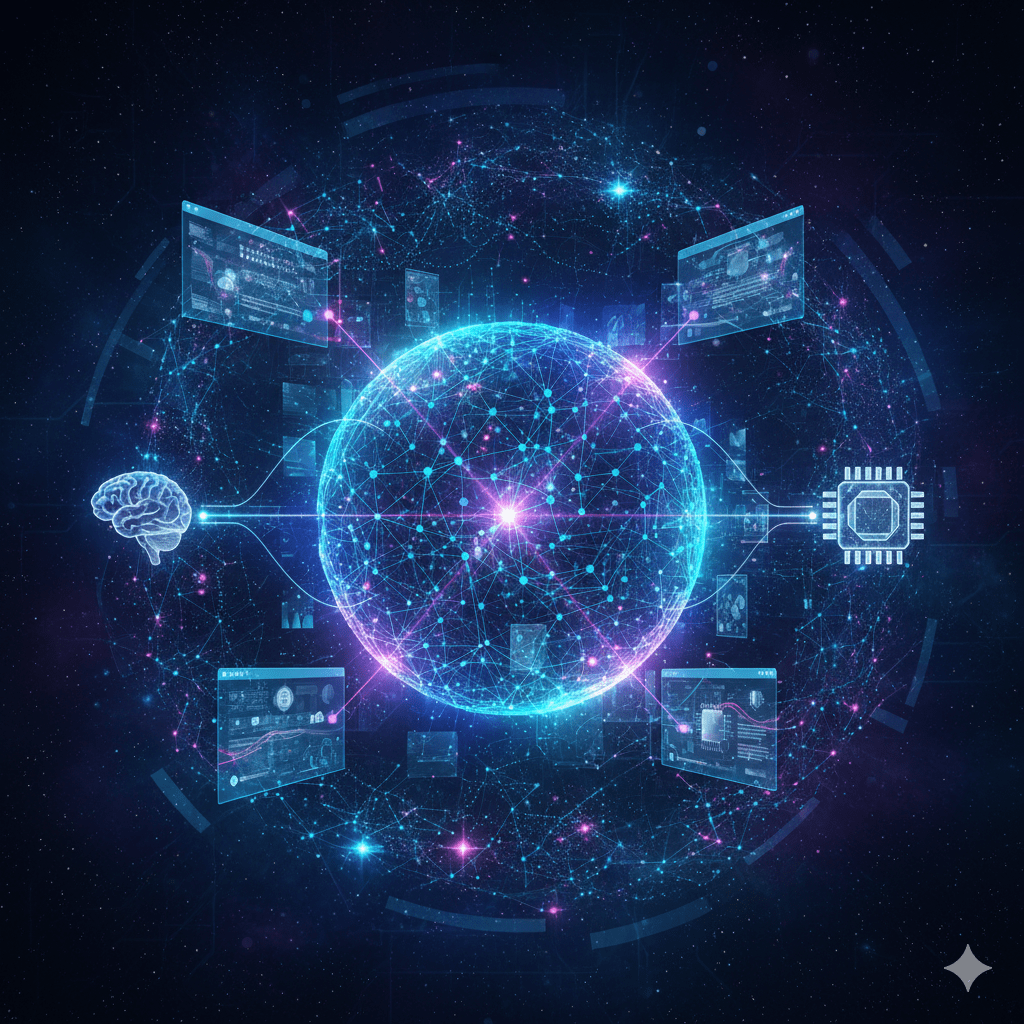
What is MCP (Model Context Protocol)? The Revolution in AI Connectivity
Model Context Protocol (MCP) is an open protocol developed by Anthropic that is revolutionizing how artificial intelligence models connect and interact with external applications, services, and data sources. In this comprehensive guide, we’ll explore what MCP is, how it works, and why it’s so important for the future of AI.
🤔 What exactly is MCP?
MCP (Model Context Protocol) is a standard communication protocol that allows AI models, like Claude, to connect securely and efficiently with:
- 📁 Local file systems
- 🌐 APIs and web services
- 🗄️ Databases
- 🛠️ Specialized tools
- 📊 Enterprise data sources
Anthropic’s Vision
Anthropic developed MCP with a clear vision: democratize access to AI capabilities by allowing any developer or company to connect their systems with advanced AI models without the need for complex integrations.
🏗️ MCP Architecture and Components
Main Components
-
MCP Client
- The AI model that consumes resources
- Example: Claude Desktop, web applications
-
MCP Server
- Provides specific resources
- Can be a file system, database, API, etc.
-
Transport Layer
- Facilitates communication between client and server
- Supports multiple protocols (stdio, HTTP, WebSocket)
Communication Architecture
[MCP Client] ←→ [Transport] ←→ [MCP Server] ←→ [Resource]
(Claude) (stdio) (FileSystem) (Files)
⚡ Key Features of MCP
🔒 Security and Control
- Granular permissions: Precise control over what the model can access
- Sandboxing: Secure isolation of resources
- Complete auditing: Logging of all interactions
🔌 Integration Flexibility
- Multiple transports: stdio, HTTP, WebSocket
- Extensible: Easy to add new types of resources
- Platform agnostic: Works on any operating system
📈 Scalability
- Distributed architecture: Independent MCP servers
- Load balancing: Automatic load distribution
- Intelligent caching: Performance optimization
🛠️ Practical Use Cases
1. Software Development
// Example: MCP Server for Git repository
const gitServer = new MCPServer({
name: "git-server",
capabilities: ["read_files", "execute_commands"],
tools: ["git_status", "git_diff", "git_log"]
});
2. Data Analysis
- Connect with SQL databases
- Integration with BI tools
- Processing CSV/Excel files
3. Enterprise Automation
- Integration with CRM (Salesforce, HubSpot)
- ERP connectors (SAP, Oracle)
- Document management systems
4. Web Development
- REST and GraphQL APIs
- Content management systems
- E-commerce platforms
🔧 MCP Implementation
System Requirements
- Node.js 18+ or Python 3.8+
- Appropriate system permissions
- Network configuration (for HTTP transports)
Basic Installation
# Install MCP SDK
npm install @modelcontextprotocol/sdk
# Or with Python
pip install mcp
Create a Simple MCP Server
import { Server } from "@modelcontextprotocol/sdk/server/index.js";
const server = new Server(
{
name: "my-mcp-server",
version: "1.0.0",
},
{
capabilities: {
resources: {},
tools: {},
},
}
);
// Define resources
server.setRequestHandler(ListResourcesRequestSchema, async () => {
return {
resources: [
{
uri: "file:///data/users.json",
name: "User Data",
mimeType: "application/json",
},
],
};
});
🌟 Advantages of Using MCP
For Developers
- ✅ Simplified integration: No more complex custom APIs
- ✅ Reusability: One MCP server works with multiple clients
- ✅ Reduced maintenance: Well-documented standard protocol
For Enterprises
- ✅ Enhanced security: Granular access control
- ✅ Scalability: Grows with business needs
- ✅ Improved ROI: Leverage existing data with AI
For End Users
- ✅ Unified experience: AI that accesses all your resources
- ✅ Privacy: Data remains under your control
- ✅ Productivity: More efficient workflows
🔍 MCP vs Other Solutions
| Feature | MCP | Traditional APIs | Plugins |
|---|---|---|---|
| Standardization | ✅ Open protocol | ❌ Varied implementations | ❌ Platform-specific |
| Security | ✅ Granular permissions | ⚠️ Implementation dependent | ⚠️ Variable |
| Scalability | ✅ Distributed architecture | ⚠️ Limited | ❌ Coupled |
| Maintenance | ✅ Low | ❌ High | ❌ High |
🚀 The Future of MCP
Ongoing Developments
- More transports: WebRTC, gRPC
- Visual tools: Graphical interfaces for configuration
- Ecosystem expansion: More native integrations
Industry Adoption
Large tech companies are evaluating MCP for:
- Enterprise AI integration
- Process automation
- Advanced data analysis
📚 Resources and Learning
Official Documentation
Community and Support
- GitHub: Official repositories and examples
- Discord: MCP developer community
- Forums: Technical discussions and best practices
🎯 Conclusion
Model Context Protocol (MCP) represents a significant advancement in AI integration, offering an open standard that simplifies the connection between AI models and external resources. Its focus on security, scalability, and simplicity positions it as a key technology for the future of AI application development.
Next Steps
- Explore the official documentation of MCP
- Experiment with basic examples
- Identify use cases in your organization
- Develop your first MCP server
MCP is not just another technology; it’s the infrastructure that will allow AI to seamlessly integrate into our digital world, maintaining the control and security that enterprises need.
Are you ready to get started with MCP? The AI connectivity revolution is here, and MCP is your gateway. 🚀